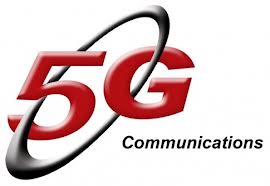- Written by sherlley
- Hits: 2322
Of Meetings and Agenda!!
 Most of you are on the threshhold of professional life which galores with meetings, agenda, deadline, targets and the likes. We will focus on Meetings and agenda in this article.
Most of you are on the threshhold of professional life which galores with meetings, agenda, deadline, targets and the likes. We will focus on Meetings and agenda in this article.
A meeting is a lot like a magic show. You have a group of people trying to reach a common goal. If you have good leadership and share the work, you can produce results that appear magical. To do that, remember and apply The Meeting Magic Formula: M + A + G + I + C = Success.
Meet or Not? – Determine whether or not a meeting is the best way to accomplish your goal by answering the following questions:
-
What is the overall objective? What needs to be accomplished? When does it need to be done?
-
Is there another approach that would work as well as, or better than, a meeting?
-
Is this work really best accomplished by a group activity? Who needs to attend?
-
What will the meeting cost? Will achieving the desired outcomes be a good “return on investment”?
Agenda – With the end in mind, prepare carefully to get what you want. Develop a detailed agenda (plan) that identifies the meeting purpose, location, start and end times, participants, topics and time frames, and desired outcomes. Distribute the agenda to all participants several days prior – along with a meeting announcement/invitation that identifies what participants should bring ... and how they should prepare.
Guidelines – Set and follow “ground rules” that will ensure you stay on track. For example:
-
One person speaks at a time – side comments will be limited.
-
No personal attacks. Discuss positions, not people.
-
Turn off cell phones and pagers – or set them on silent. Wait for the break to return calls.
-
We will stick to the agenda and scheduled times. If the group wants to extend a discussion or add a topic, everyone must agree to extend the meeting or defer other topics.
-
If we slip off the agenda, we’ll “park” issues for discussion at the end – if time permits.
Involvement – Encourage everyone to participate and contribute. Here are some tips for doing that:
-
Don’t try to do it all yourself. Enlist participants as recorders, timekeepers, group leaders, etc.
-
Use a variety of techniques that require participation (e.g., brainstorming, breakout sessions).
-
Do periodic process checks (“Are we on track?”) to create opportunities for participant feedback.
-
Target interaction: Ask for input from specific people.
-
Reward active participation with acknowledgments and simple “thank you” comments.
-
Act swiftly (and tactfully) to stifle any disruptors or dominators.
Clarity – Communicate clearly to help ensure success.
-
Use pictures, charts, and other visuals.
-
Explain any unique terms or acronyms that you use – and remind others to do the same.
-
Provide a glossary of new or technical terms.
-
Ask participants to paraphrase discussions, key points, and key learning.
-
Encourage questions.
-
Summarize/review all agreements, commitments, and future action items at the end. Be specific!
Meet Well and Lead Right


